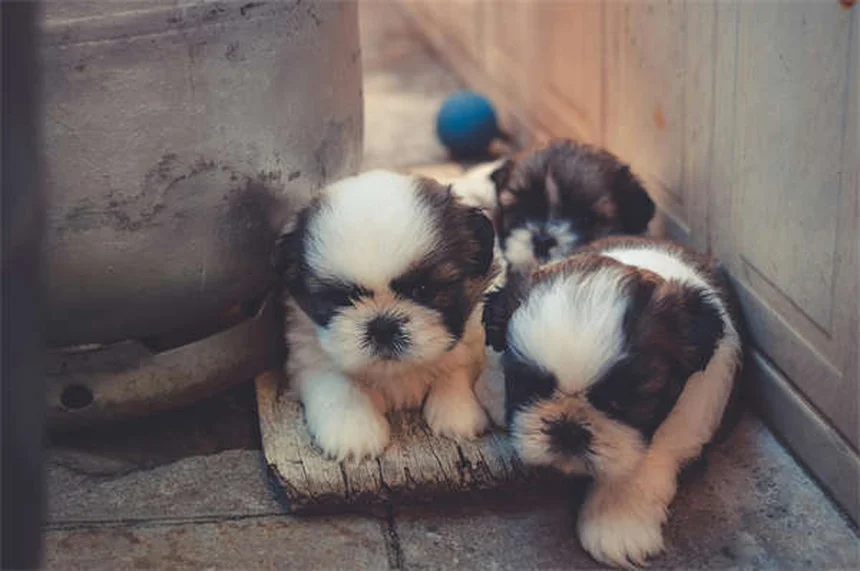Advertisement
What are testicular tumors in dogs? The answer is: Testicular tumors are abnormal growths that develop in unneutered male dogs' reproductive organs, and they're more common than you might think! If you've got an older intact male dog, you'll want to pay close attention because these sneaky growths often show up without obvious symptoms at first. I've seen many cases where owners only noticed something was wrong when their dog started attracting other males - talk about an awkward situation! The good news? Most of these tumors are treatable, especially when caught early. In this guide, we'll walk you through everything you need to know - from spotting the warning signs to understanding treatment options. Trust me, as someone who's helped countless dog owners through this, knowledge really is power when it comes to your pup's health.
E.g. :How to Calm Your Pet at the Vet: 7 Proven Tips from Experts
- 1、Understanding Testicular Tumors in Dogs
- 2、Spotting the Warning Signs
- 3、Why Do These Tumors Develop?
- 4、Diagnosis: What to Expect
- 5、Treatment Options
- 6、Living After Treatment
- 7、Prevention Is Key
- 8、Common Questions Answered
- 9、Beyond the Basics: What Else You Should Know
- 10、The Emotional Side of Treatment
- 11、Alternative Approaches Worth Considering
- 12、Financial Considerations You Shouldn't Ignore
- 13、Breed-Specific Insights
- 14、When to Really Worry
- 15、Myths That Need Busting
- 16、FAQs
Understanding Testicular Tumors in Dogs
What Exactly Are We Dealing With?
Picture this - your unneutered male dog is getting older, and suddenly you notice something unusual about his... well, you know. Testicular tumors are actually pretty common in older intact male dogs. These little troublemakers develop when cells in the testicles start growing out of control.
Now here's the interesting part - while these tumors can be scary, many dogs never develop them because most responsible owners neuter their pets early. But for those who don't? The testicles keep doing their job producing sperm and testosterone, which unfortunately means they can also develop these abnormal growths. The good news? Many of these tumors are benign, meaning they won't spread to other parts of the body.
The Three Main Culprits
Let me break down the three most common types for you:
| Tumor Type | What It Affects | Risk Level |
|---|---|---|
| Seminoma | Sperm-producing cells | Low to moderate |
| Interstitial cell tumors | Testosterone-producing cells | Usually benign |
| Sertoli cell tumors | Cells supporting sperm development | Moderate risk |
Did you know that some breeds are more prone to these issues? German Shepherds, Boxers, and Collies seem to draw the short straw here. But why does this happen? Well, it's like asking why some people get more sunburns than others - sometimes it's just the genetic lottery.
Spotting the Warning Signs
 Photos provided by pixabay
Photos provided by pixabay
What Should You Look For?
Here's the tricky part - your dog might not show any obvious signs at first. It's like when your teenager "cleans" their room - you have to really look to notice anything's wrong. Some things to watch for:
• One testicle suddenly looking bigger than the other
• Unusual swelling in the scrotal area
• Changes in how your dog urinates
And here's something you might not expect - some dogs with these tumors actually start attracting other male dogs! Why? Because certain tumors can mess with hormone levels, making your dog give off different chemical signals.
When Things Get Serious
Now, if the tumor has spread (which thankfully isn't super common), you might notice:
• Your dog acting more tired than usual
• Weight loss without diet changes
• Breathing difficulties
But here's a question for you: How can you tell the difference between normal aging and something more serious? The key is sudden changes. If your typically energetic pup suddenly becomes a couch potato, that's your cue to visit the vet.
Why Do These Tumors Develop?
The Risk Factors
Age is the biggest factor here. These tumors mostly show up in dogs over 10 years old. But wait - there's more to the story. Cryptorchidism (when one testicle doesn't descend properly) increases the risk significantly. In fact, undescended testicles are about 13 times more likely to develop tumors!
Some breeds seem genetically predisposed, but let's be honest - any unneutered male dog is at risk. It's like leaving cookies on the counter - eventually, someone's going to take one.
Diagnosis: What to Expect
 Photos provided by pixabay
Photos provided by pixabay
What Should You Look For?
When you bring your dog in, your vet will start with a thorough physical exam. They'll feel for any unusual lumps or changes in size. Think of it like a mechanic checking under the hood - they know what normal should feel like.
If something seems off, they might recommend:
• X-rays to check for spread
• Ultrasound for a closer look
• Blood tests to assess overall health
The Big Decision
Here's where things get real. The only way to know exactly what kind of tumor you're dealing with is through biopsy or removal. It's like sending a suspicious package to the lab - you won't know what's inside until you open it.
But here's another question: What if your dog is a breeding male? In that case, your vet might opt for a needle biopsy first to get information without immediately removing the testicle. It's all about balancing health concerns with your dog's role.
Treatment Options
Surgery: The Gold Standard
Neutering is typically the best solution. It's like fixing a leaky faucet - you don't just put a bucket under it, you replace the whole thing. The surgery is similar to a routine neuter, just with some extra precautions.
For most dogs, this solves the problem completely. The recovery period is about 10-14 days of restricted activity. Imagine telling your hyperactive Labrador he can't run or jump for two weeks - that's the real challenge!
 Photos provided by pixabay
Photos provided by pixabay
What Should You Look For?
In rare cases where the cancer has spread, additional treatments like chemotherapy might be recommended. But let's keep this in perspective - only about 15% of these tumors are malignant and likely to spread.
Living After Treatment
Recovery Process
Post-surgery, your main jobs are:
1. Keeping the incision clean and dry
2. Preventing your dog from licking the site
3. Limiting activity (good luck with that!)
You'll need to check the surgery site daily for signs of infection. Redness, swelling, or discharge means it's time to call the vet. It's like monitoring a teenager's first attempt at cooking - you want to catch problems early.
Long-Term Outlook
The prognosis is generally excellent for dogs with benign tumors. Even with malignant ones, early detection makes a huge difference. It's all about catching these things before they have a chance to cause bigger problems.
Prevention Is Key
The Best Defense
Early neutering is by far the best prevention. Most vets recommend doing this between 2-6 months of age, though some larger breeds might benefit from waiting until 9-15 months.
Think of it like vaccinating against diseases - why wait until there's a problem when you can prevent it altogether? Plus, you'll avoid contributing to pet overpopulation. Win-win!
Regular Check-Ups Matter
Even if your dog is neutered, regular vet visits are important. It's like taking your car in for oil changes - routine maintenance prevents bigger issues down the road.
Common Questions Answered
Are These Tumors Painful?
Most dogs don't show obvious signs of pain, but larger tumors can cause discomfort. It's like wearing shoes that are too tight - you might not complain at first, but eventually it becomes a problem.
How Common Are They?
While they're the most common tumor in intact male dogs, the overall numbers aren't huge because most dogs are neutered. It's like asking how common sunburn is in Seattle - not very, because everyone carries an umbrella!
Remember, your vet is your best resource for any concerns about your dog's health. When in doubt, get it checked out!
Beyond the Basics: What Else You Should Know
The Hormone Connection You Never Considered
Here's something fascinating that most dog owners never think about - these tumors can actually change your dog's personality! Testosterone-producing tumors might make your normally chill pup suddenly act like a teenager with too much Axe body spray. We're talking excessive marking, aggression, or even mounting behavior.
On the flip side, some tumors produce estrogen instead. This can lead to feminization syndrome where male dogs develop female characteristics. Picture this - your tough-looking Rottweiler suddenly getting attention from other male dogs because his hormones are out of whack. It's like nature's cruel joke!
The Cryptorchidism Factor
Let's talk about those undescended testicles - they're like ticking time bombs. Did you know that an undescended testicle has a 50% chance of developing cancer by age 10? That's way higher than the risk for normally descended ones.
Here's a quick comparison of risks:
| Testicle Position | Cancer Risk by Age 10 | Average Diagnosis Age |
|---|---|---|
| Normally descended | 7% | 11 years |
| Undescended (abdominal) | 50% | 8 years |
| Undescended (inguinal) | 30% | 9 years |
If your dog has this condition, you're basically playing Russian roulette with his health. That's why vets push so hard for surgery in these cases - it's not just about fertility, it's about cancer prevention.
The Emotional Side of Treatment
Your Dog's Perspective
Ever wonder how your dog feels about all this? While we can't ask them directly, their behavior tells us a lot. Most dogs bounce back from neutering surgery like nothing happened - it's us humans who stress more about it!
Think about it this way - your dog doesn't have the same emotional attachment to his testicles as human males might. For him, it's more about the discomfort of the actual tumor. Removing it often brings immediate relief, especially if it was causing pain or making him act strangely.
Owner Guilt Is Real
I've seen so many owners beat themselves up over this. "If only I'd neutered him sooner..." But here's the truth - life happens. Maybe you wanted to breed him, or you were worried about surgery risks, or you just didn't know better. The important thing is you're addressing it now.
Remember that hilarious meme about the dog who ate chocolate and the owner freaking out? This is kind of like that - we all make decisions we later question. The key is learning and moving forward.
Alternative Approaches Worth Considering
When Surgery Isn't an Option
For some older dogs with health issues, anesthesia might be too risky. In these cases, vets might suggest hormone therapy or radiation instead. It's like choosing physical therapy over knee surgery - sometimes the less invasive option makes more sense.
But here's the catch - these alternatives don't completely eliminate the risk like surgery does. They're more like pressing pause on the problem rather than solving it permanently. You'll need frequent check-ups to monitor progress.
The Holistic Angle
Some owners ask about natural remedies. While things like turmeric or CBD oil might help with inflammation, they won't make tumors disappear. It's like trying to put out a house fire with a water pistol - you need the right tools for the job.
That said, certain supplements can support recovery after surgery. Omega-3s for skin healing, probiotics for gut health during antibiotics - these are the supporting actors that help the star (surgery) shine.
Financial Considerations You Shouldn't Ignore
Cost Comparison
Let's talk dollars and sense (see what I did there?). Here's how the costs typically break down:
| Procedure | Average Cost | Insurance Coverage |
|---|---|---|
| Routine neuter | $50-$300 | Usually covered |
| Tumor removal | $500-$2000 | Often covered |
| Chemotherapy | $2000-$5000 | Sometimes covered |
Isn't it wild how much more expensive treatment becomes when you wait? That routine neuter at 6 months looks like a bargain compared to emergency surgery later. It's like changing your oil regularly versus waiting until your engine seizes up.
Pet Insurance Reality Check
Here's something most people don't realize - many pet insurance policies consider testicular tumors a preventable condition if you didn't neuter your dog. That means they might not cover treatment costs!
It's like your health insurance denying coverage for lung cancer if you smoke - frustrating but understandable from their perspective. Always read the fine print before assuming you're covered.
Breed-Specific Insights
Why Some Breeds Are More Vulnerable
Ever notice how certain dog breeds seem prone to specific health issues? With testicular tumors, it's not just about genetics - body size plays a role too. Larger breeds tend to have higher rates, possibly because their cells divide more over their lifetime.
But here's a curveball - small breeds like Chihuahuas actually have higher rates of certain tumor types. It's like how some people assume only big dogs get hip dysplasia, but Dachshunds are actually high-risk too.
The Purebred Paradox
Purebred dogs face a double-edged sword here. On one hand, responsible breeders screen for genetic issues. On the other, limited gene pools can concentrate certain risks. It's like that family where everyone's tall - great for basketball, but bad for finding pants that fit.
Mixed breed owners shouldn't get too comfortable though. While mutts generally have fewer genetic issues, they're not immune to testicular tumors. That "Heinz 57" terrier mix still needs regular check-ups.
When to Really Worry
The Metastasis Red Flags
While most testicular tumors stay local, some can spread to lymph nodes, lungs, or even the brain. Scary thought, right? Here's what should send you running to the vet:
• Sudden difficulty breathing
• Neurological symptoms like seizures
• Dramatic weight loss in weeks
But here's the good news - this progression is rare, especially if you catch things early. It's like spotting a small kitchen fire before it reaches the gas line.
The Age Factor
Young dogs can get these tumors too, though it's uncommon. If your 2-year-old develops a testicular mass, it's more likely to be something else like an infection or trauma. The vet will need to play detective to figure it out.
Older dogs? Different story. After age 10, any testicular changes deserve immediate attention. It's like that "check engine" light in an old car - you don't ignore it unless you enjoy walking.
Myths That Need Busting
"Neutering Causes Health Problems"
Some owners worry that neutering leads to obesity or joint issues. While there's a grain of truth (hormones do affect metabolism), the cancer prevention benefits far outweigh these risks. It's like worrying about rain on your wedding day while ignoring the tornado warning.
The key is adjusting food intake post-neuter and keeping your dog active. Many "neuter side effects" are actually just owner laziness in disguise!
"My Dog Will Miss His Manhood"
Dogs don't have the same psychological attachment to their testicles as humans do. Your dog won't sit around mourning his lost masculinity - he'll be too busy begging for treats and sniffing butts.
In fact, many behavior problems improve after neutering. Less roaming, less marking, less aggression - it's like trading teenage hormones for a more mellow adulthood.
E.g. :Testicular Cancer in Dogs - Veterinary Partner - VIN
FAQs
Q: How can I tell if my dog has a testicular tumor?
A: Spotting testicular tumors can be tricky since dogs often don't show obvious pain. Here's what I tell my clients to look for: First, check for uneven testicle size - one might suddenly look larger than the other. Run your hands over the area (when your dog's relaxed) feeling for unusual lumps or hardness. You might also notice swelling in the scrotum or changes in how your dog urinates. Some dogs even develop feminine traits like enlarged nipples or start squatting to pee. The weirdest sign? Other male dogs might suddenly show interest in your pup due to hormone changes. If you notice any of these red flags, don't panic - but do schedule a vet visit pronto. Remember, early detection makes all the difference!
Q: Are certain dog breeds more likely to get testicular tumors?
A: Absolutely! Through my years in veterinary practice, I've noticed some breeds do seem predisposed. German Shepherds, Boxers, and Collies top the list, along with Afghan Hounds and Weimaraners. But here's the kicker - any unneutered male dog can develop these tumors, especially as they age. It's like how some people are more prone to sunburn, but anyone can get burned with enough exposure. The breed connection likely comes down to genetics, but we're still learning about the exact mechanisms. The bottom line? If you've got one of these breeds and haven't neutered them yet, it's worth having a serious chat with your vet about the risks.
Q: What's the treatment for testicular tumors in dogs?
A: Neutering is typically the gold standard treatment - we're talking about removing both testicles to eliminate the problem at its source. In most cases I've handled, this simple surgery completely resolves the issue. The procedure is similar to routine neutering, just with extra precautions. For about 85% of dogs, that's all they'll need! Now, if the tumor has spread (which is rare), we might recommend additional treatments like chemotherapy. Recovery usually takes 10-14 days of keeping your dog calm - easier said than done with energetic breeds! The key is catching it early; the sooner we remove these tumors, the better the outcome almost always is.
Q: Can testicular tumors in dogs be prevented?
A: Here's the best news I can give you: yes, prevention is possible! Early neutering is by far the most effective way to stop these tumors before they start. Most vets recommend doing this between 2-6 months old, though some large breeds might benefit from waiting until 9-15 months. Think of it like vaccinating - why risk the disease when you can prevent it? I always tell my clients that neutering isn't just about population control; it's serious cancer prevention. And let's be honest, it saves you from dealing with other "intact male" behaviors too. If your dog's already older and unneutered, regular testicular checks during vet visits become crucial for early detection.
Q: Are testicular tumors in dogs usually cancerous?
A: Here's the relief many owners feel when I explain this: most testicular tumors in dogs are actually benign! In my practice, I've seen three main types, and only some are likely to spread. Seminomas and Sertoli cell tumors have about a 15% chance of being malignant, while interstitial cell tumors are almost always benign. That said, even benign tumors can cause problems if they grow large enough. The real concern comes with cryptorchid dogs (those with undescended testicles) - their risk jumps up significantly. The takeaway? While the "C-word" is scary, the odds are in your dog's favor, especially with prompt treatment. Always get any unusual lumps checked, but don't assume the worst right away.







